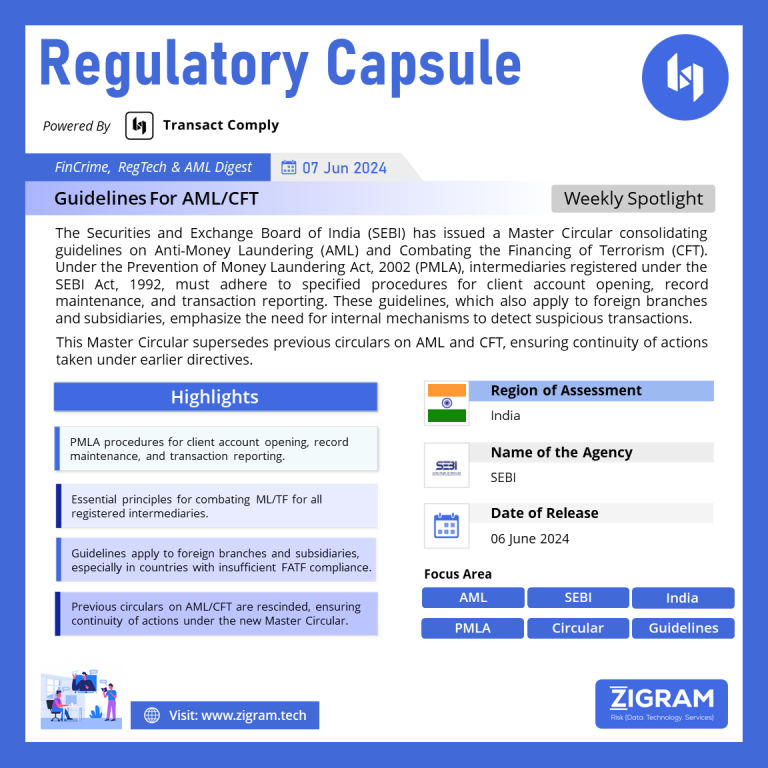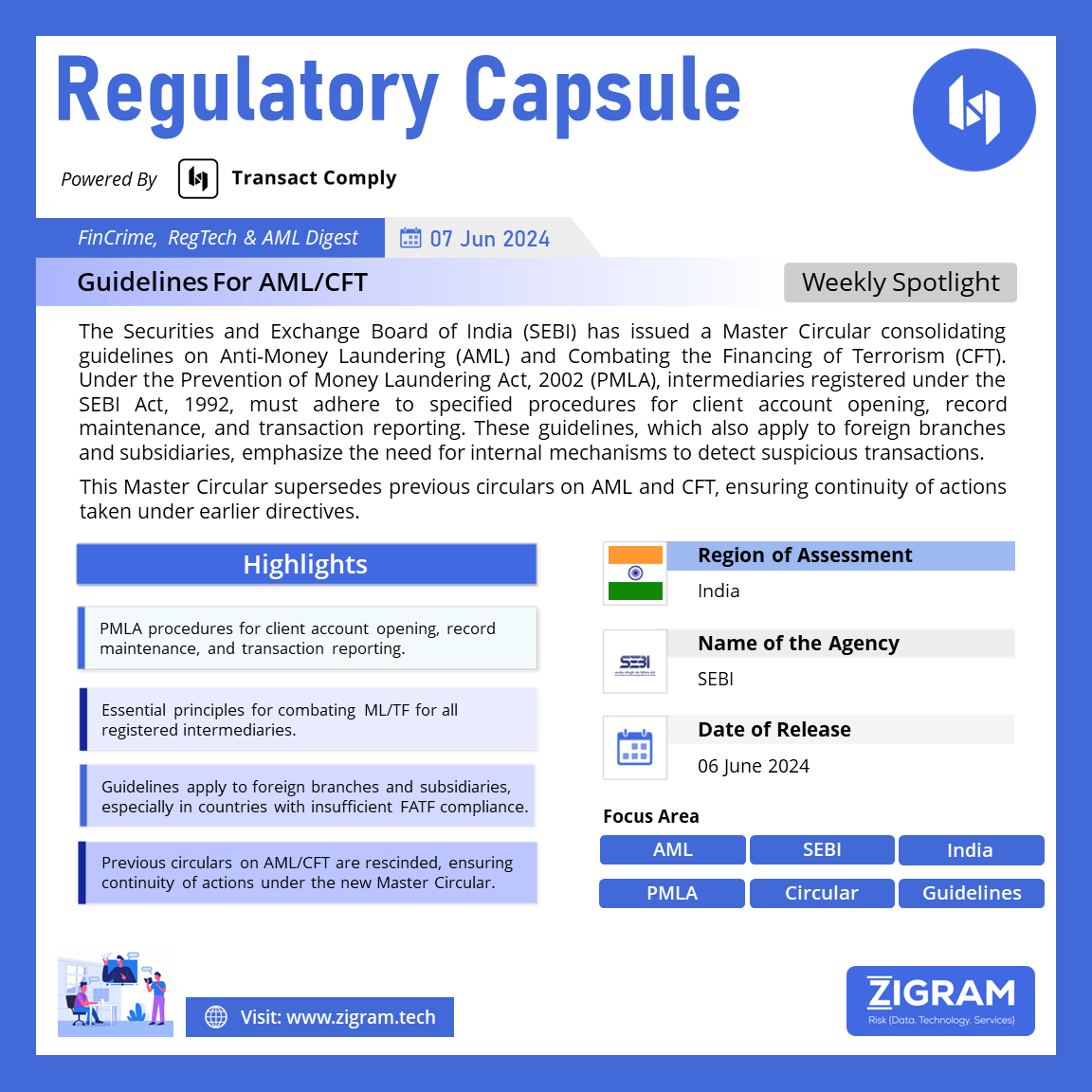Published Date:
Regulation Name: SEBI AML/CFT Guidelines
Publishing Date: 06 June 2024
Region: India
Agency: Securities And Exchange Board Of India
The Securities and Exchange Board of India (SEBI) has issued a comprehensive Master Circular detailing guidelines for Anti-Money Laundering (AML) and Combating the Financing of Terrorism (CFT). These guidelines align with the Prevention of Money Laundering Act, 2002 (PMLA) and the associated rules. The Master Circular is critical for all entities registered under the SEBI Act, 1992, including stock exchanges, to ensure robust procedures for client account opening, meticulous record maintenance, and thorough transaction reporting.
Overview and Background
The circular begins with an overview and background that contextualizes the need for stringent AML and CFT measures in the securities market. The policies and procedures to combat money laundering and terrorist financing form the core of the guidelines, emphasizing essential principles and the obligation of entities to establish effective policies and procedures.
Policies and Procedures to Combat Money Laundering and Terrorist Financing
The guidelines stipulate essential principles that every reporting entity must follow, including the obligation to establish comprehensive policies and procedures. These procedures need to be documented in written Anti Money Laundering Procedures, ensuring clarity and consistency in their implementation.
A significant portion of the guidelines focuses on Client Due Diligence (CDD). It includes detailed steps for the client identification procedure, highlighting the importance of verifying the identity of clients. The guidelines also cover the reliance on third parties for carrying out CDD, outlining the circumstances and conditions under which third-party reliance is permissible.
Risk Management and Monitoring of Transactions
Risk management is another critical area covered in the guidelines. The guidelines advocate for a risk-based approach, encouraging entities to conduct thorough risk assessments. This approach is essential for effective monitoring of transactions and suspicious transaction reporting. Entities are required to maintain detailed records and have robust systems for the retention of records.
Freezing of Funds and Compliance with WMD Act
The circular outlines the procedure for freezing funds, financial assets, or economic resources, particularly in relation to the Weapons of Mass Destruction and their Delivery Systems (Prohibition of Unlawful Activities) Act, 2005. It provides directions to stock exchanges and registered intermediaries for the implementation of Section 12A of this act.
Designated Individuals and Jurisdictions
The guidelines include a list of designated individuals and entities involved in money laundering or terrorist financing. They also address jurisdictions that do not sufficiently apply the Financial Action Task Force (FATF) recommendations, advising entities on how to handle transactions and business relationships with such jurisdictions.
Reporting and Compliance
Entities are required to report to the Financial Intelligence Unit-India (FIU-IND) and designate officers to ensure compliance with PMLA provisions. The guidelines stress the importance of hiring and training employees to recognize and address AML and CFT issues, as well as educating investors about these risks.
Repeal and Savings
Finally, the Master Circular repeals previous circulars on AML and CFT, ensuring that any action taken under earlier directives remains valid under the new guidelines.
This comprehensive approach by SEBI aims to strengthen the integrity of the securities market, ensuring robust defenses against financial crimes such as money laundering and terrorist financing.
Read the circular released by SEBI here.
- #SEBI
- #AML
- #CFT
- #FinancialSecurity
- #Compliance
- #MoneyLaundering
- #TerroristFinancing
- #FinancialRegulations
- #ClientDueDiligence
- #RiskManagement
- #PMLA

